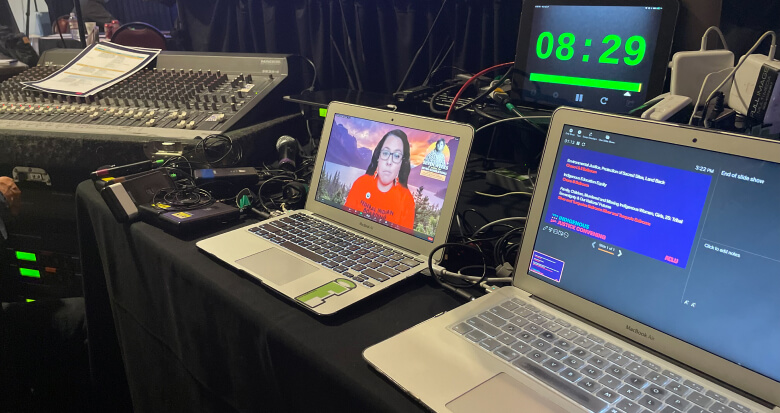
10 Tips for Live Streaming Success at Events
- Plan ahead and prepare: The success of any live event, including a live stream, greatly depends on proper planning and preparation. This means ensuring you have all the necessary equipment ready and functional ahead of time. Whether it’s the computer system, camera, microphone, lighting or even back-up power supply, each of these elements should be checked and tested prior to the event. Doing so will not only increase the chances of a successful stream but also prevent any embarrassing or disruptive technical glitches. Moreover, preparation also involves getting comfortable with the live streaming software, understanding the controls, and being able to troubleshoot minor issues on the fly..
- Choose the right platform: The platform you choose for your live stream can make a significant difference in its reception and success. Platforms such as YouTube, Facebook, and Twitch each have unique audiences and varying features for livestreaming. Therefore, it’s important to understand the demographic and interests of your target audience, as well as the technical capabilities and limitations of each platform. This will help you decide the most suitable platform that aligns with your event’s objectives and your audience’s preferences.
- Promote your stream: The visibility of your live stream largely depends on how effectively it’s promoted. Therefore, it’s essential to announce your live stream well in advance, providing details about the date, time, platform, and what viewers can expect. Utilize various marketing channels at your disposal, including social media, email newsletters, blogs, or even paid advertisements if necessary. Engage with your potential viewers, build up anticipation, and ensure they have all the information they need to tune in to your live stream.
- Engage with your audience: Live streaming is an interactive medium, unlike pre-recorded content. This means viewers can interact with you and vice versa. It’s important to take advantage of this by actively acknowledging and responding to viewer comments and questions. This can foster a sense of community and keep viewers engaged throughout the stream. This interaction can be facilitated by setting up live chats, polls, or Q&A sessions. Remember, an engaged audience is more likely to stay, return for future streams, and even promote your content to others.
- Have a backup plan: Despite your best efforts and planning, technical issues or internet connection problems may still occur during your live stream. To avoid any disruptions to your stream, it’s wise to have a backup plan. This could involve having a secondary internet connection, backup equipment, or even pre-recorded content that you can switch to in case of any unforeseen issues. This helps to ensure continuity of your stream and prevents viewers from losing interest due to any interruptions.
- Keep it professional: Although live streaming is often more relaxed and conversational than traditional media, maintaining professionalism is key. This involves being punctual, well-prepared, and respectful towards your viewers. Moreover, your presentation and the quality of your content should be at a high standard. This doesn’t mean you can’t be personal or show your unique personality; rather, it means balancing these aspects with a professional approach to foster credibility and respect from your audience.
- Use high-quality audio and video: The technical quality of your stream is paramount. A poor-quality audio or video stream can be frustrating for viewers and may lead to them leaving your stream prematurely. Therefore, it’s essential to invest in good quality equipment to ensure your audio is clear and your video is crisp. Depending on your budget, this may involve professional-grade microphones, cameras, and even dedicated lighting. It’s also important to understand how to optimize your streaming software to ensure you’re broadcasting at the best possible quality.
- Have a co-host or guest: Incorporating a co-host or guest into your live stream can provide a multi-dimensional approach to your content. This additional perspective can bring an extra layer of depth to the conversation, especially if the guest or co-host brings their own unique experiences, insights, or opinions. Guests could be experts in the topic of your stream, influencers in the space, or simply someone who can bring energy and charisma to the event. A co-host, on the other hand, can help manage the live interaction, fielding audience questions, or alternating between topics, thus allowing for a smoother, more engaging flow. This also takes some pressure off of you as the main host, allowing for breaks and giving you time to focus on the technical aspects of the stream, if necessary.
- Consider using special effects or graphics: Enhancing your live stream with special effects and graphics can significantly elevate the viewer experience. Graphics can range from simple items like branded overlays and logos to more complex elements like on-screen animations, data visualizations, and interactive displays. Special effects, when used appropriately, can add excitement and visual appeal, helping to grab and retain viewer attention. Moreover, things like real-time captions or on-screen text can enhance accessibility and comprehension. Always remember, though, that while these tools can enhance your stream, they should not distract from the main content. Keep effects tasteful and relevant to your content and audience.
- Follow up with your audience after the event: Post-event follow-ups are crucial in maintaining audience engagement and loyalty. After the live stream, take the time to thank your viewers for their participation. You can do this via the same platform you used for the live stream, through email, or on your social media channels. Following up can also include sharing a recording or highlight reel of the stream for those who missed it or those who want to revisit certain parts. This step not only makes your viewers feel valued, but it also helps to build excitement for future streams. Furthermore, consider sharing information about your next live stream to keep the momentum going. You might also want to use this opportunity to gather feedback about what worked well and what can be improved for future live streams.
